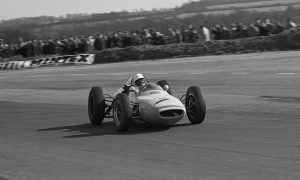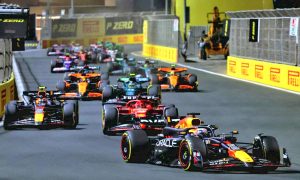As the season gets underway, spare a thought for the team press officers. No one else will.
I have a confession to make: I love reading the Problem Pages in magazines, you know the sort of thing where people write in for advice about their love life or how to deal with their boss. One story in particular struck a chord and this was the gist of it: “Dear Problem solver, I have met a very sweet girl and we plan to marry. Not all her family will be able to attend the wedding. Her older brother is doing a 10 stretch for drug dealing, while her dad is under house arrest for tax fraud. We’re not sure if her mother will be out of rehab in time and her younger sister isn’t speaking to us after we tried to talk her our of working as an “escort.” So you can see it’s difficult, but what I really need advice with, is how to reveal the terrible truth to all of them that I work as a press officer in Formula 1.”
Yes the life of an F1 press officer, public relations executive, communications manager is not an easy one, made even harder because, while no one has the temerity to tell a car designer or a data engineer how to do his or job, everyone knows that they could do the press work better than the designated person in the team.
The Melbourne week is a massively busy time for all the PRs, who will be deluged with requests for interviews for print, web, radio and TV. It doesn’t help that Australia has a very large and active media contingent for whom this is the only race of the season and they tend to believe they should get top billing; the most common request being, “can I have a one-to-one interview with Daniel Ricciardo, I’ll only need 40 minutes and the photographer will want 15.”
Look at it this way, wherever you live in the world, you expect to open your newspaper, turn on the radio, watch TV and see all the main actors in the drama that is F1, interviewed for your benefit. Now consider that people in a couple of dozen more countries expect just the same and you can see why dealing politely with hundreds of requests, each one apparently more important than the next, is such a minefield. Oh and did I mention the media centre is packed with prima donnas, each with a greater sense of entitlement than the next?
The press officers spent a big chunk of the winter putting together a press kit, packed with useful information about the drivers, the new car, the sponsors, you name it, it’s in there. Come Sunday night in Melbourne most of these kits can go in the trash section of your mailbox, when the weakness of such statements as “we have made good progress compared to last year,” "we plan on taking the fight to Mercedes,” “we feel we have the best possible driver combination,” will have been cruelly exposed as a pack of lies on the Albert Park track.
Having eventually worked out some sort of interview schedule that fits in with the needs of a driver’s race engineer, his meeting with a personal sponsor, the time needed to shape up with his trainer, do a track walk, attend a GPDA meeting, make an appearance in the Paddock Club and have lunch with his sycophantic entourage, you then have to chivvy the driver along to do all this media work. I’ve done several stints as an F1 press officer and my preference is to get rookie drivers you can train. Unfortunately, my first ever PR gig was with Honda in 1988, when we had Nakajima, Piquet, Prost and Senna on the books, so not much training to do there.
Ayrton in particular could be “challenging” to deal with. I once let him ramble on and on about why he couldn’t possibly do an interview before pointing out his excuse had lasted 15 minutes, or three times the length of the proposed interview. Then there was the 1989 GP in Phoenix. Ayrton was, to put it mildly, a bit miffed his McLaren expired at half distance while leading and he stormed off into the motorhome in a huff. As I sat patiently outside, waiting…and waiting…and waiting, a TV screen was showing events that would become known as the Tiananmen Square Massacre. It rather put our little PR problem into perspective and I gave up waiting for the words of a temperamental Brazilian genius.
More recently, I did manage to work with new drivers and that scenario makes PR life as easy as training a dog from when it’s a puppy. There are a few basic rules the drivers have to understand: most press officers are polite and use words like “please” and “thank you” but this is just good form and does not mean a driver can say no to anything. Ideally, I used to like getting them whipped into shape over the course of winter testing, explaining to them that the ridiculous pay packet they picked up was not for their ability to drive a racing car, as they enjoy that bit of the job and would do it for nothing. The money is actually paid so that they will jump through hoops for the media and sponsors. While they think about that, I might tell them to take their sunglasses off for interviews and stop chewing gum, so that by the time we got to Race 1, they’d be fully trained and would automatically stand up when I walked into the room.
Now I’m back on the dark side as a member of the fourth estate of democracy, better known as the F1 press corps, so I’ll be relying on those press officers to line up their drivers for me, with the given that my request is obviously more important than anyone else’s.











